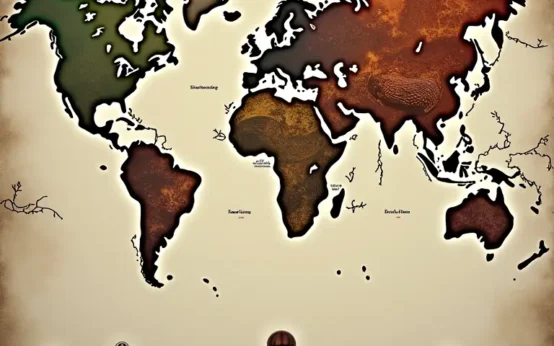For many, flowers represent beauty, sentiment, and a thoughtful gesture. But did you know that for a significant period in history, particularly during the Victorian era, flowers weren’t just *appreciated* for their aesthetic qualities – they were actively *used* as a complex system of communication? This ‘language of flowers,’ known as floriography, allowed individuals to express feelings and ideas that societal constraints often forbade them from uttering aloud. This article will delve into the fascinating history of floriography, its Victorian heyday, the meanings assigned to different blooms, and how echoes of this delicate code still resonate in modern floral practices.
A History Rooted in Antiquity
While often associated with the Victorians, the practice of assigning symbolic meanings to flowers stretches back centuries. Its origins can be traced to ancient civilizations. In ancient Greece and Rome, flowers were linked to myths and deities, carrying symbolic weight in religious ceremonies and artistic representations. For example, roses were associated with Aphrodite, the goddess of love, and lilies with Hera, the goddess of marriage.
However, the concept wasn’t a formalized ‘language’ as we understand it. It was more about recognizing and appreciating the inherent symbolism within existing cultural frameworks. The Ottoman Empire played a crucial role in developing a more structured system. During the 17th and 18th centuries, ‘selam’ – a complex system of symbolic objects, including flowers – was used in the Ottoman court to convey messages subtly. This practice, brought to Europe through trade and diplomatic relations, laid the groundwork for the more elaborate floriography that would flourish in the Victorian era.
The Victorian Obsession: Restraint and Revelation
The Victorian era (1837-1901) witnessed a societal emphasis on propriety and restraint. Public displays of emotion were often frowned upon, particularly regarding romantic feelings. This created a need for subtle, coded communication. Enter floriography. It offered a way to express affection, grief, regret, or even defiance, all while maintaining a veneer of social decorum.
Several factors contributed to its widespread popularity. The rise of romanticism in literature and art fueled an interest in symbolism and emotional expression. The increased accessibility of flowers – thanks to advancements in horticulture and transportation – meant that more people could participate in this floral dialogue. Numerous ‘flower dictionaries’ were published, codifying the meanings associated with different blooms, colors, and even arrangements. These dictionaries became essential guides for both senders and recipients.
Think of these dictionaries as the Victorian equivalent of an emoji guide, but infinitely more nuanced and complex. A simple bouquet wasn’t just a pretty arrangement; it was a carefully constructed message, potentially laden with hidden meanings.
Decoding the Floral Alphabet: Common Meanings
The meanings assigned to flowers varied slightly across different dictionaries and regions, but some core interpretations remained consistent. Here’s a glimpse into the floral alphabet:
- Red Rose: Love, passion, desire. (Though darker shades of red could hint at mourning).
- White Rose: Purity, innocence, sympathy.
- Yellow Rose: Friendship, joy, but historically could also signify jealousy.
- Forget-Me-Not: True love, remembrance.
- Lavender: Distrust, caution.
- Lily of the Valley: Sweetness, humility, a return to happiness.
- Sunflower: Adoration, loyalty, longevity.
- Carnation (Red): Deep love and affection.
- Carnation (Pink): A mother’s love.
- Carnation (Yellow): Disdain, rejection.
- Hyacinth (Blue): Constancy, sincerity.
- Pansy: Thoughts, remembrance.
- Poppy: Consolation, remembrance (particularly for sleep/death).
- Violet: Modesty, faithfulness.
- Chrysanthemum (Red): I love.
- Chrysanthemum (White): Truth.
It wasn’t just the *type* of flower that mattered. The *way* it was presented – the arrangement, the number of blooms, whether it was offered with the right side or left side facing the recipient – all contributed to the message. A reversed flower, for instance, could signify the opposite of its usual meaning.
Beyond the Bloom: Colors, Arrangements, and Presentation
Floriography was far more intricate than simply selecting a flower based on its dictionary definition. The color of the flower held significant weight. Red typically symbolized passionate love, while white represented purity and innocence. Yellow, as mentioned, had a more complex meaning, sometimes denoting friendship but also potentially indicating jealousy.
Arrangements were carefully considered. A tightly bound bouquet could signify a strong, enduring bond, while a loose arrangement might suggest a fleeting affection. The way the flowers were presented was also crucial. Offering a flower with the right hand indicated sincerity, while the left hand could imply secrecy or caution. Even the time of day a bouquet was delivered could alter its interpretation. A gift presented at dusk might carry a more melancholy tone than one given in the morning.
The Language of Gardens: Creating Floral Messages
The popularity of floriography extended beyond cut flowers. Victorian gardens themselves were often designed to convey messages. Planting specific flowers in particular locations could create a secret code visible only to those ‘in the know’. A path lined with forget-me-nots, for example, could silently declare enduring affection. Garden design became another canvas for expressing feelings that words could not.
This connection between gardens and coded messages highlights the holistic nature of Victorian floriography. It wasn’t merely about sending bouquets; it was about immersing oneself in a world where flowers spoke volumes, influencing everything from personal interactions to landscape design. It shares a similar ethos with other forms of symbolic communication from the period, such as heraldry, which used symbols to represent family history and status.
Decline and Revival: From Dictionaries to Modern Sentiment
The intricate language of flowers began to decline in popularity in the early 20th century. Changing social norms, increased directness in communication, and the simplification of life in the wake of two World Wars contributed to its fading relevance. The rigid rules and complex codes seemed increasingly archaic in a rapidly changing world.
However, the underlying sentiment – the desire to express emotions through flowers – never completely disappeared. In recent years, there has been a revival of interest in floriography, fueled by a renewed appreciation for Victorian aesthetics, a fascination with hidden histories, and a longing for more meaningful communication.
Modern florists are increasingly incorporating elements of floriography into their designs, offering bouquets with specific symbolic meanings. While few people today adhere to the strict codes of Victorian flower dictionaries, many are aware of the general associations between certain flowers and emotions. For example, a bouquet of red roses is still universally recognized as a symbol of love and passion.
Modern Echoes: Flowers in Contemporary Communication
While the Victorian system is rarely used in its entirety today, its influence persists. We still instinctively associate certain flowers with specific feelings. Lilies are often chosen for sympathy bouquets, while sunflowers evoke feelings of happiness and warmth. The practice of sending flowers to express condolences, congratulations, or apologies is a direct descendant of the Victorian tradition.
Moreover, the emphasis on thoughtful selection and presentation remains. Choosing flowers that reflect the recipient’s personality or the nature of your relationship is a way of adding a personal touch and conveying a deeper meaning. The modern florist often acts as a translator, helping clients choose blooms that express their intended message.
Furthermore, the very act of giving flowers speaks to a fundamental human need for connection and emotional expression. In a world increasingly dominated by digital communication, the tangible beauty and symbolic weight of flowers offer a welcome respite – a reminder of the power of non-verbal communication and the enduring allure of nature’s artistry.
Floriography and Other Symbolic Systems
The Victorian fascination with hidden languages wasn’t limited to flowers. It was part of a broader cultural trend that included the study of symbolism in art, literature, and even everyday objects. This interest in decoding hidden meanings connects to other historical practices like ancient navigation by the stars, where understanding symbolic patterns was essential for survival, or even the roots of superstition, which often relies on assigning meaning to seemingly random events.
The desire to find order and meaning in the world around us, to decipher hidden codes and unlock secret messages, seems to be a deeply ingrained human impulse. Floriography, in its Victorian heyday, was a particularly charming and expressive manifestation of this impulse.
The Future of Floral Communication
Will floriography ever experience a full-scale revival? Perhaps not in its original, rigidly codified form. But the underlying principles – the power of flowers to evoke emotions, the beauty of symbolic communication, and the desire to express feelings in a meaningful way – are likely to endure.
As we become increasingly aware of the rich history and symbolism of flowers, we may find ourselves drawn to incorporate more intentionality into our floral gifts. Perhaps we’ll start to rediscover the joy of sending bouquets that aren’t just visually appealing but also carry a hidden message, a subtle expression of affection, gratitude, or remembrance. The language of flowers may have evolved, but its ability to speak to the heart remains timeless. The art of reading the skies, like weather lore, or understanding gestures, relies on a sensitivity to subtle cues – a skill floriography cultivated.


 The Curious Acoustics of Historical Echo Chambers: Resonance, Ritual, and Revelation
The Curious Acoustics of Historical Echo Chambers: Resonance, Ritual, and Revelation  The Curious Cartography of Scent: Mapping Perfume Ingredients Through History
The Curious Cartography of Scent: Mapping Perfume Ingredients Through History  The Curious Lexicon of Lost Trades
The Curious Lexicon of Lost Trades  The Surprisingly Consistent Symbolism of Antique Fans – Language, Status & Victorian Courtship
The Surprisingly Consistent Symbolism of Antique Fans – Language, Status & Victorian Courtship  The Surprisingly Consistent Science of Historical Ice Harvesting – A Frozen History of Commerce & Preservation
The Surprisingly Consistent Science of Historical Ice Harvesting – A Frozen History of Commerce & Preservation  The Unexpectedly Consistent Science of Historical Buttonhooks – Fashion, Function & Forgotten Tools
The Unexpectedly Consistent Science of Historical Buttonhooks – Fashion, Function & Forgotten Tools